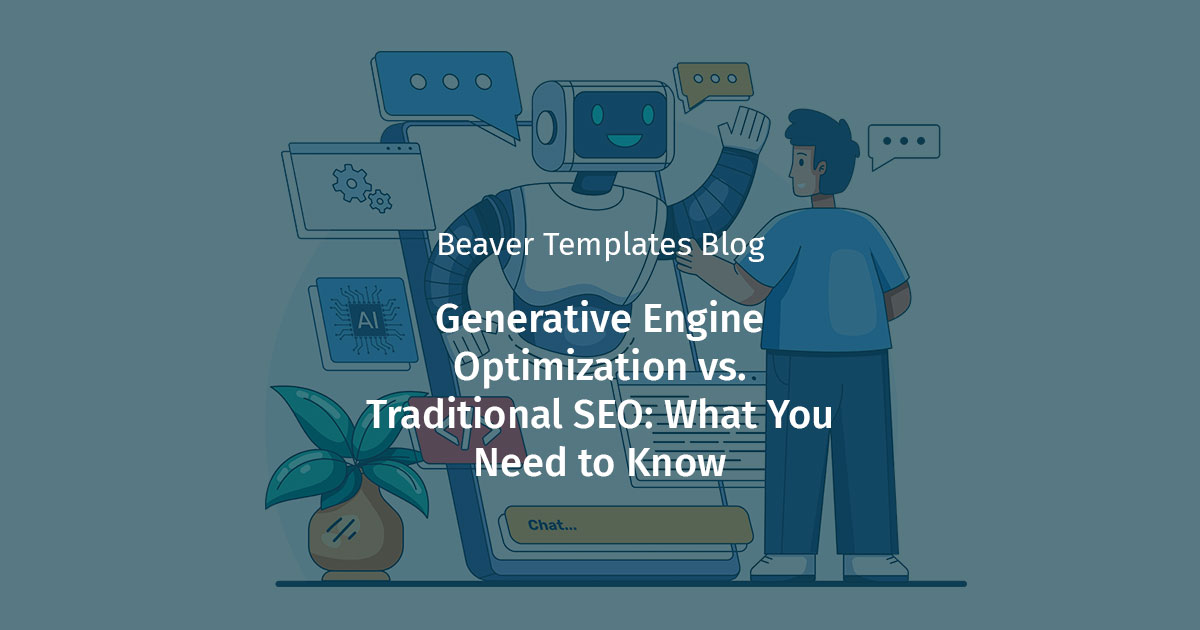As AI tools like ChatGPT, Gemini, and Claude reshape how users search and consume information, digital marketers and SEO specialists are asking a crucial question: How do we optimize content for AI-driven search engines? Enter Generative Engine Optimization (GEO), a fast-evolving concept that’s redefining what it means to rank and be found online.
In this post, we’ll compare Generative Engine Optimization vs. traditional SEO, explain why GEO matters, and share actionable tips to future-proof your strategies, especially if you’re managing SEO for clients in ecommerce or local business niches.
What Is Generative Engine Optimization?
Generative Engine Optimization (GEO) is the practice of tailoring digital content to be discoverable and recommended by AI-driven tools, such as ChatGPT, Perplexity.ai, Bing Copilot, and Google’s Search Generative Experience (SGE). While traditional search engine optimization focuses on rankings in Google SERPs, GEO aims to influence how AI systems select, summarize, and cite content in direct answers.
In short:
- Traditional SEO = Optimizing for search engines.
- GEO = Optimizing for generative AI answers.
This emerging field is especially relevant for digital marketing agencies and SEO professionals who want to maintain visibility as more users turn to AI for quick, conversational answers.
Key Differences Between Traditional SEO and Generative Engine Optimization
| Aspect | Traditional SEO | Generative Engine Optimization |
| Audience | Human searchers | AI models & LLMs |
| Goal | Rank on search engine result pages (SERPs) | Be cited or surfaced in AI-generated responses |
| Tactics | On-page SEO, link building, technical SEO | Structured, well-sourced, clear content designed for summarization |
| Metrics | Traffic, rankings, CTR | Mentions in AI tools, brand citations, LLM inclusion |
| Tools | Google Search Console, Ahrefs, Screaming Frog | Perplexity.ai, ChatGPT, Bing Copilot, and structured data validators |
Why GEO Is Becoming More Important
AI is increasingly curating information for users rather than simply listing links. According to Pew Research, a growing number of users, especially younger ones, prefer answers directly from AI instead of clicking through multiple websites.
As ChatGPT, Gemini, and other generative tools become gateways to information, failing to optimize for them can mean losing visibility, traffic, and authority, especially in niche markets.
GEO Techniques: How to Optimize for Generative AI
Here are actionable strategies to help your content get picked up by generative engines:
1. Use Clear, Authoritative Language
Generative engines favor clear, direct explanations. Think of your content as something an AI model might quote word-for-word.
- Use headers and short paragraphs
- Avoid fluff and jargon
- Use a tone that signals expertise
2. Answer Questions Structurally
Write content that answers conversational questions like “What is generative engine optimization?” or “How does GEO differ from traditional SEO?” in clear bullet points or short paragraphs. AI tools love digestible formats.
3. Use Structured Data
Help AI engines understand your content by including schema markup, especially for FAQs, products, and articles. Optimizing your website with ai-friendly schema is a great way to boost GEO, but it can help with traditional SEO as well.
4. Establish Topical Authority
AI tools prefer content from sources with topical relevance and credibility. Instead of general blogs, build clusters around topics like “SEO for AI,” “seo for chatgpt,” and “generative optimization tips.”
5. Use First-Party Data and Sources
AI engines reward original, well-cited insights. Reference reputable sources, conduct original surveys when possible, and include outbound links to industry leaders.
6. Monitor GEO Performance
While GEO doesn’t yet have standardized analytics, you can track brand mentions in tools like ChatGPT, Bing Copilot, or Perplexity. Test prompts and see if your site is recommended or cited.
How GEO Complements Organic and Technical SEO
GEO doesn’t replace traditional SEO, it extends it.
- Organic SEO ensures visibility in search engines.
- GEO ensures your expertise surfaces in AI summaries.
For digital marketing agencies managing multiple clients, incorporating GEO strategies can become a differentiator that helps clients adapt to evolving user behavior.
Staying Ahead of the SEO Curve
It’s looking like Generative Engine Optimization will be a necessary evolution of SEO. As AI continues shaping how people access information, marketers and agencies must adapt their content to remain visible, valuable, and cited.
For those selling services or digital assets (like Beaver Builder templates), staying ahead of GEO best practices can help you reach new clients through both traditional and AI-powered search engines.
Key Takeaways
- GEO = Optimizing for generative AI tools like ChatGPT, not just Google
- Use clear, structured content that AI models can easily quote
- Combine GEO with traditional SEO and schema markup
- Monitor AI tool mentions and citations of your brand/content
- Embrace GEO to future-proof your SEO services
Ready to create a high-converting website that supports your GEO strategy? Explore beautifully designed, conversion-ready templates built with Beaver Builder at Beaver Templates.


